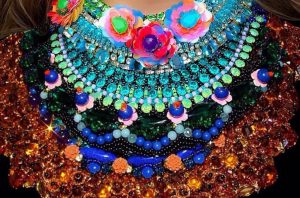
The Palace of the Marquis of Dos Aguas(Spanish: Palacio del Marqués de Dos Agüas, Valencian: Palau del Marqués de Dosaigües) is a Rococo nobility palace,[1] historically important in the city, is located in one of the most central locations in the city of Valencia(Spain), stately mansion that was of the Marqueses of Dos Aguas, currently owned by the Spanish State, where is installed the González Martí National Museum of Ceramics and Decorative Arts.
This building near Plaza Patriarca has gone through many changes over the years and now has elements of several architectural styles, including a fascinating Baroque alabaster facade. Embellished with carvings of fruits and vegetables, the facade was designed in 1740 by Ignacio Vergara. It centers on the two voluptuous male figures representing the Dos Aguas (Two Waters), a reference to Valencia’s two main rivers and the origin of the noble title of the Marqués de Dos Aguas. Since 1954, the palace has housed the Museo Nacional de Cerámica, with a magnificent collection of local and artisanal ceramics. Look for the Valencian kitchen on the second floor.
This was the principal public room on the piano nobile
This is the room most frequently shown to visitors. It is dominated by the ceiling painting ' the Union of Valencia and Don Jaime in the name of religion' showing the city of Valencia kneeling before Jaime 1 and a figure in white representing the Christian faith. This politico-religious allegory, the work of salustiano Asenjo, was painted in 1866. It is flanked by four medallions showing Venus and putti by Placido Frances. The orchestra played hidden to view behind the grille of the inner wall which is decorated with plaster reliefs alluding to the function of the room.
The reliefs of the frieze by Eleuterio Del Alamo are dated in 1865.
The room has its original furniture settees and benches at the side and a circular sofa in the middle. The candelabra and the wall sconces with pairs of male and female figures are also original.
A Rococo Nobility palace
Historians say, that the house of the Marqueses of Dos Aguas was considered in Valencia for centuries, as a paragon of nobility and opulence and that, its fortune came from the year 1500, at which time a family of merchants, the Rabassa, is enriched, first with the commercial treatment and then with the leases of the rights of the Generalitat, i.e. the contracts of indirect contributions.








